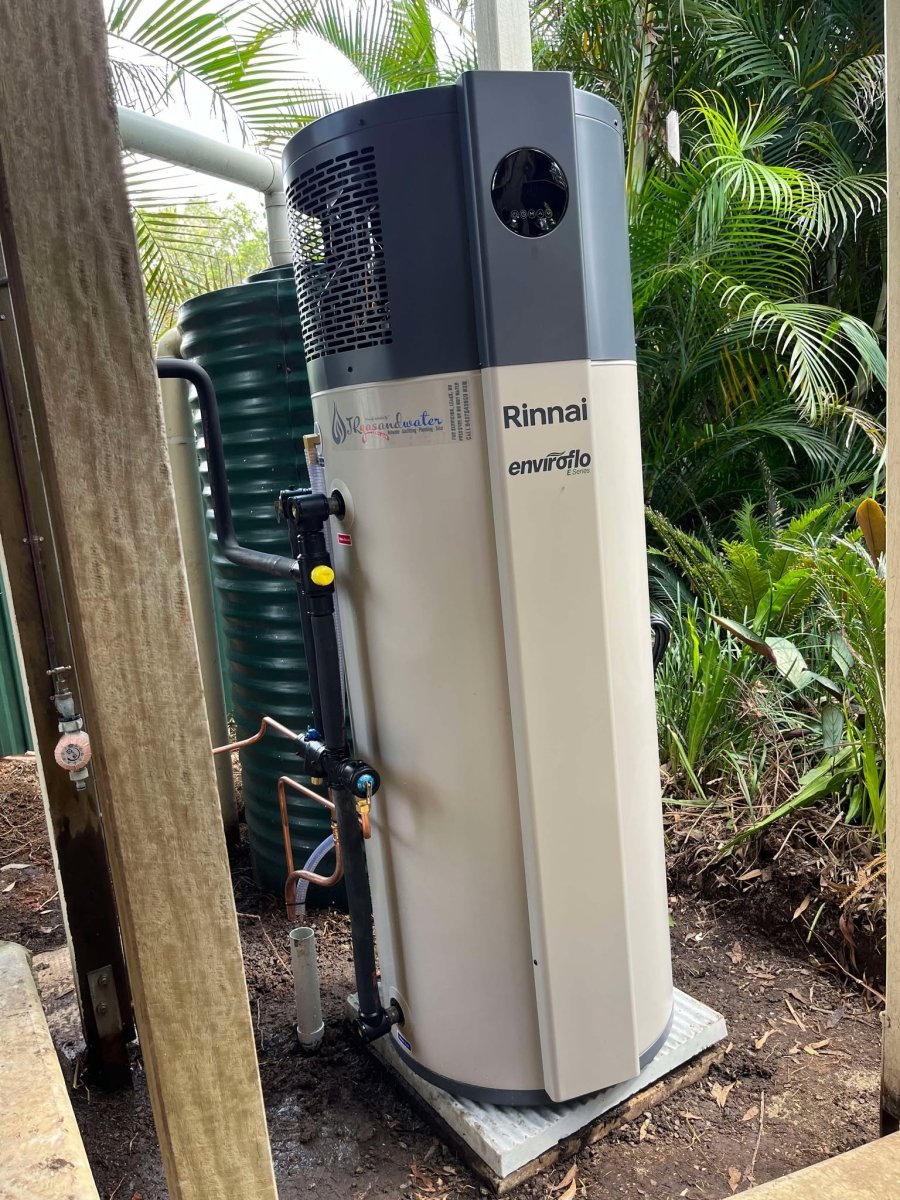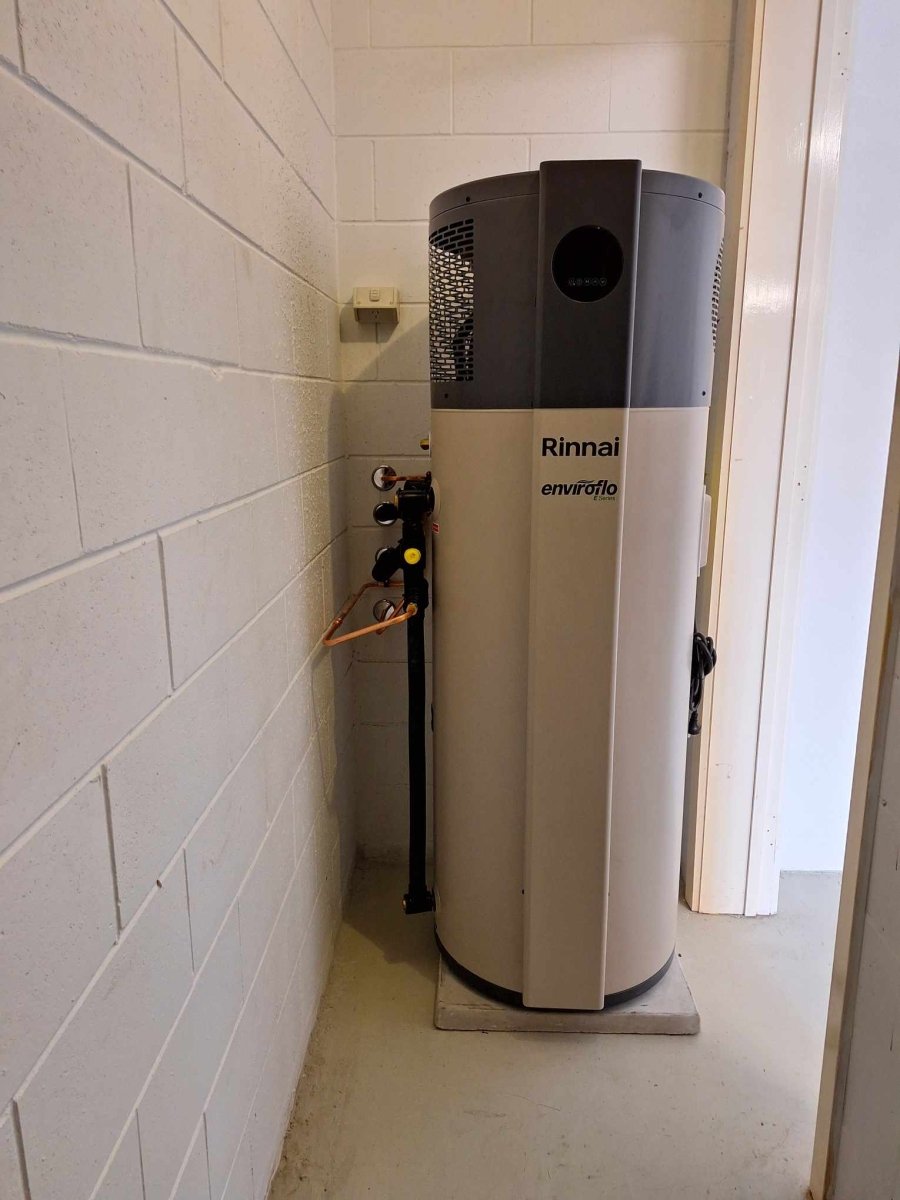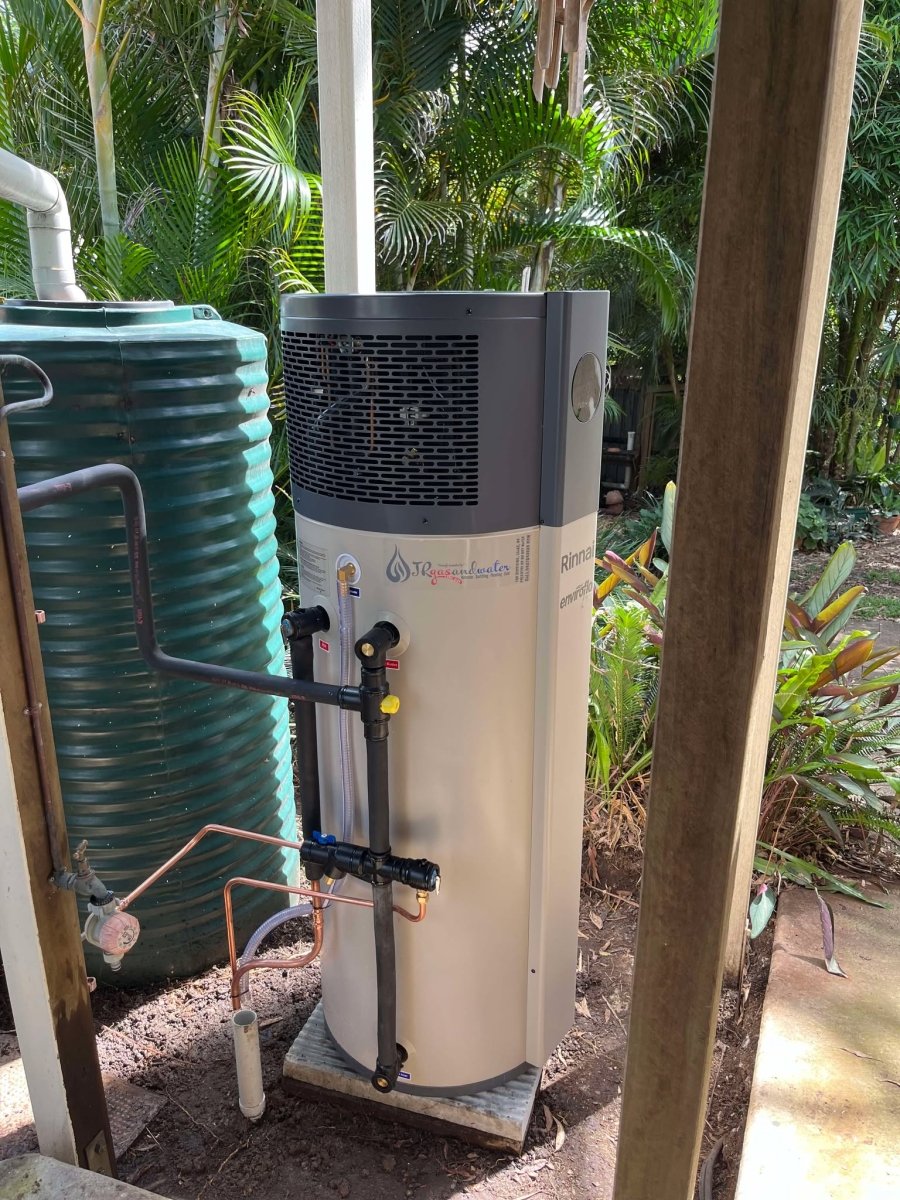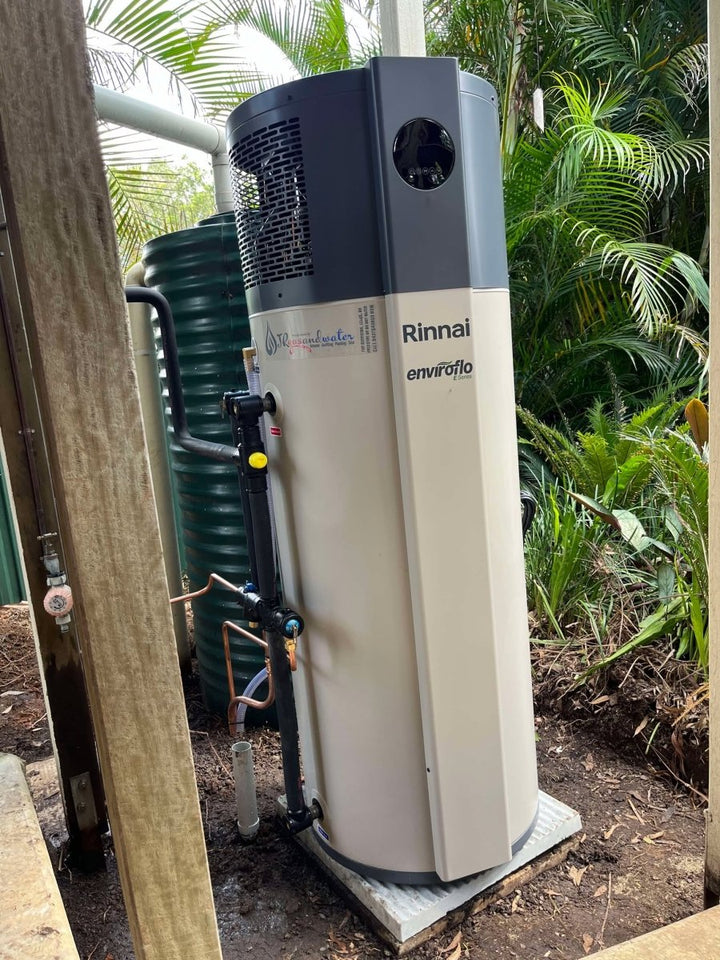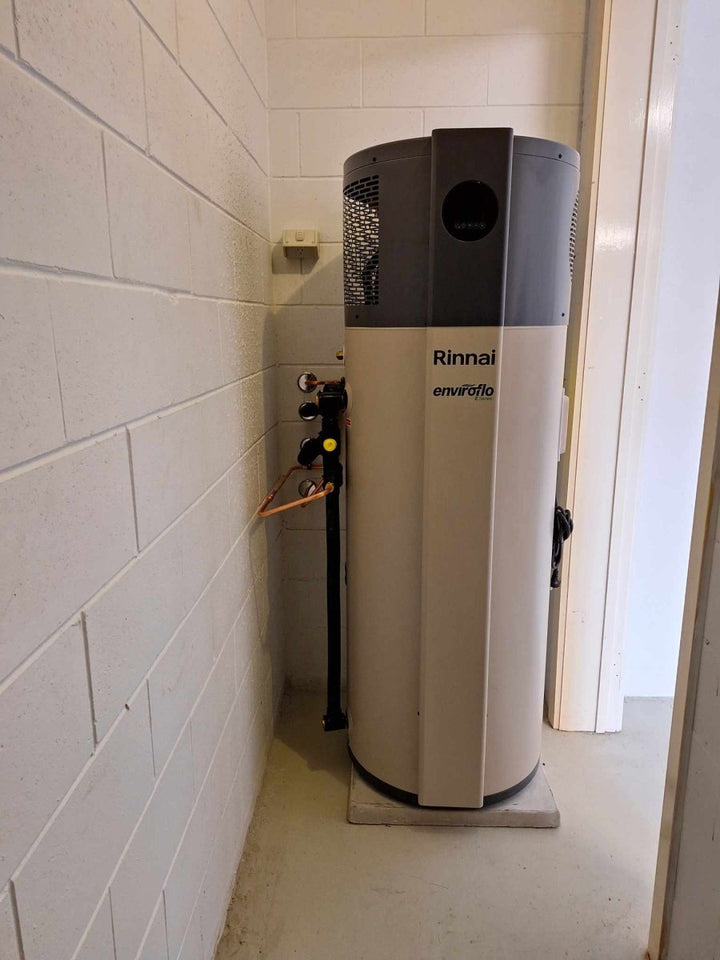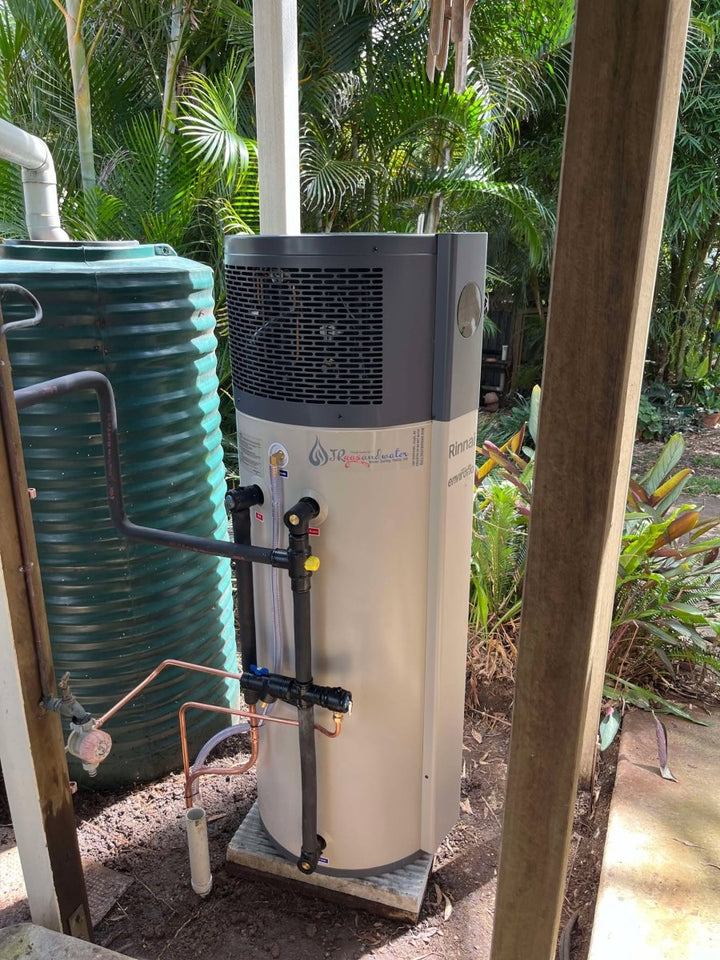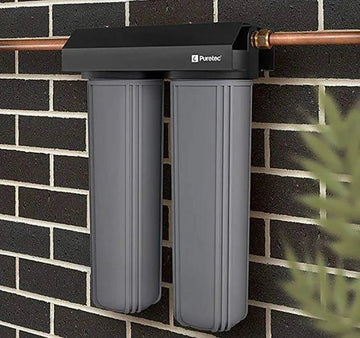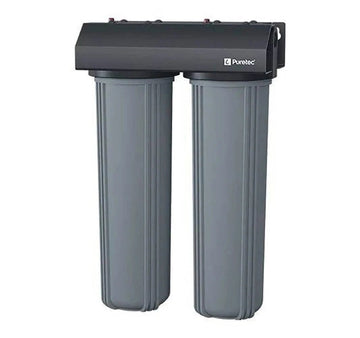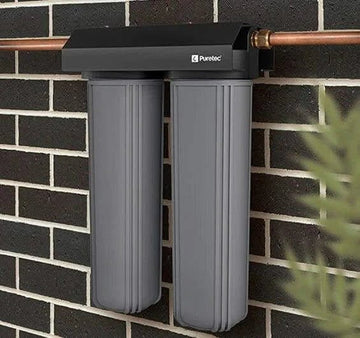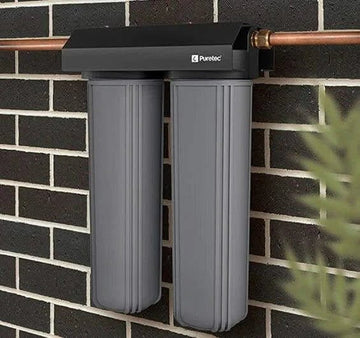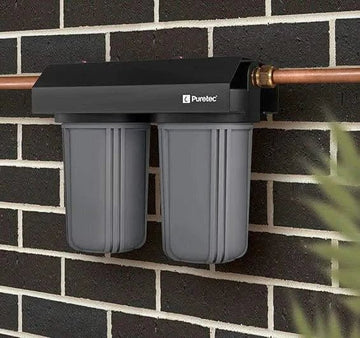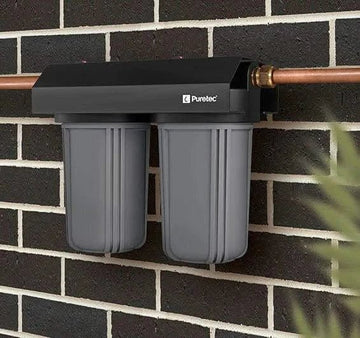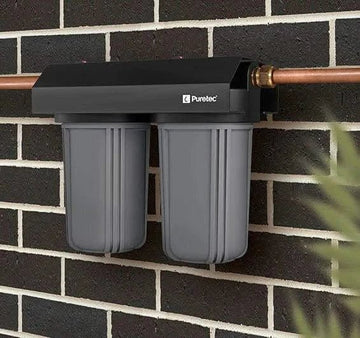Maximize Efficiency with the Rinnai A Series Heat Pump: Your Sustainable Hot Water Solution
Looking to cut energy bills and be eco-friendly? The Rinnai A Series Heat Pump can help. Expect energy-efficient hot water, low operational costs, and reduced environmental impact. Our deep dive will cover its practical benefits and sustainable technology — without the fluff.
Key Takeaways
-
The Rinnai A Series Heat Pump is an energy-efficient hot water system that uses a heat exchange mechanism to save up to 70% of the energy compared to traditional electric storage tanks.
-
Eligibility for Small Scale Technology Certificates (STCs) and potential integration with solar PV systems enhance the affordability and sustainability of the Rinnai A Series Heat Pump.
-
Regular servicing and securing an accurate installation quote are essential for maintaining efficiency, prolonging the lifespan, and assuring cost-effectiveness of the Rinnai A Series Heat Pump.
Exploring the Rinnai A Series Heat Pump
Traditional hot water systems are notorious for their high energy consumption, which inflates utility bills and expands the carbon footprint. In stark contrast, the Rinnai A Series Heat Pump delivers an environmentally friendly and efficient hot water system that pairs efficiency with sustainability. Its modus operandi? Harnessing the surrounding air through its heat exchange system to heat water, thereby curtailing energy usage significantly in this hot water system.
Energy efficiency isn’t the sole benefit of the Rinnai A Series Electric Heat Pump; it also excels in:
This ensures that you maximise hot water availability when you need it, thanks to the hot outlet.
The Science Behind Heat Exchange
The key to the Rinnai A Series Heat Pump’s impressive efficiency is rooted in the science of heat exchange. But what is heat exchange? It’s a process that involves the transfer of heat from a higher temperature object to a lower temperature object. This principle is applied in the Rinnai A Series Heat Pump, which offers up to 70% energy savings compared to a standard electric storage tank.
The heat exchange system in the Rinnai A Series Heat Pump offers several benefits:
-
It maintains high efficiency by effectively absorbing heat from the surrounding air.
-
This heat is then transferred to the water, providing energy-efficient hot water.
-
The heat pump features a convenient Wi-Fi timer function for efficient management and scheduling of hot water usage, allowing you to optimize your energy consumption.
Sustainable Hot Water Systems
In the realm of sustainable hot water systems, the Rinnai A Series Heat Pump emerges as a leading contender. It offers the following benefits:
-
Uses a heat exchange system to absorb heat from the surrounding air, leading to enhanced energy efficiency in water heating
-
Consumes up to 75% less energy than conventional systems
-
Provides a truly sustainable hot water solution
The energy-saving benefits of the Rinnai A Series Heat Pump include:
-
Cost savings
-
Decreased dependency on fossil fuels
-
Advocacy for the adoption of sustainable energy
-
Minimized energy consumption
-
Promotion of environmental sustainability by reducing carbon emissions.
Unpacking the Enviroflo A Series Benefits
The advantages of the Enviroflo A Series Heat Pump include:
-
Energy efficiency
-
Sustainability
-
Financial benefits in the form of Small Scale Technology Certificates (STCs), which help offset initial expenses
-
The value of these certificates is influenced by the system’s ability to demonstrate energy efficiency and environmental friendliness.
In addition to financial benefits, the Enviroflo A Series also provides exceptional user convenience with its Wi-Fi timer feature. This feature allows you to schedule the operation of your heat pump, optimizing running costs and improving overall user convenience through simple system control.
Energy Savings with Small Scale Technology Certificates (STCs)
The energy-saving capacity of the Rinnai A Series Heat Pump is commendable. It can achieve up to a 70% energy savings compared to a standard electric water heater of equivalent capacity, particularly during peak winter load in Zone 1 as per AS/NZS4234.
These energy savings make the heat pump eligible for Small-scale Technology Certificates (STCs), also known as scale technology certificates stc’s. In comparison to standard electric storage tanks, heat pumps are a more energy-efficient option. To check if your location is suitable for installing a frost collector, you can visit the Rinnai website and look for the “Collector Tolerant Postcodes” logo.
The Wi-Fi timer function further enhances energy savings by allowing you to efficiently manage and schedule your hot water usage.
User Convenience with Wi-Fi Timer
The Rinnai A Series Heat Pump offers the following features:
-
Wi-Fi enabled Timer Function
-
Optimizes energy consumption by syncing with your solar PV system usage
-
Allows you to schedule your heat pump’s operations to coincide with peak solar energy production
-
Results in even greater energy savings
Moreover, the Wi-Fi Timer Function is easy to configure. Simply scan the QR code in the user manual, access the ‘WiFi Set Up’ section, and proceed to configure your desired timer settings on the Edit Timer page. This level of control lets you schedule your hot water availability according to your needs, enhancing your overall user experience with the added benefit of the auto disinfection function.
Installation and Compatibility Insights
The effective installation of the Rinnai A Series Heat Pump significantly contributes to its performance and efficiency. It’s essential to consider factors such as your location’s suitability for installing a frost collector and the possibility of integrating the heat pump with a solar PV system. This section will provide valuable insights into these aspects.
The Rinnai A Series Heat Pump:
-
Specifically engineered to be compatible with solar PV systems
-
Leverages the heat exchange system, which uses ambient air to heat water
-
Results in increased energy savings and operational efficiency
Frost Collector Tolerant Postcodes
Some postcodes prove to be more conducive for the installation of the Rinnai A Series Heat Pump’s frost collector. These include those located in Victoria, New South Wales, and the ACT. Rinnai provides a detailed list of these frost tolerant postcodes on their official website.
The climate in these postcodes plays a significant role in the functioning of the frost collector. Specifically, it’s crucial to install the collector in a frost-free environment to ensure optimal operation. In warmer climates, the performance of the heat pump system in heating water can be enhanced by utilizing a cold inlet. Incorporating defrost control in the system can further improve its efficiency.
Utilizing Solar PV Usage
The Rinnai A Series Heat Pump is designed to integrate seamlessly with solar PV systems, offering an additional layer of energy savings and efficiency. A solar PV system, also known as a photovoltaic system, captures sunlight and converts it into electricity, which can then power the heat pump’s operations.
The integration of a solar PV system with the Rinnai A Series Heat Pump offers several benefits, including:
-
A significant decrease in carbon emissions
-
The promotion of environmental sustainability
-
Increased accessibility of solar water heating to diverse households.
Smart Financial Decisions: Costs and Incentives
Despite the myriad benefits the Rinnai A Series Heat Pump brings, it, like any investment, entails initial costs. However, these costs can be offset by smart financial decisions, such as availing of government grants and incentives. The Small-scale Renewable Energy Scheme, for instance, offers grants in the form of Small-scale Technology Certificates (STCs) to help reduce initial expenses.
These incentives don’t just stop at the federal level. Depending on your location, there may be specific regional or local grants available for the Rinnai A Series Heat Pump. These can be accessed through the Rinnai website by downloading the respective incentive declaration and claim forms.
Government Grants and Incentive Claim Forms
Government grants, such as Small-scale Technology Certificates (STC’s) and rebates from the NSW and Federal Government, significantly reduce the initial expenses associated with the acquisition and implementation of eco-friendly hot water systems like the Rinnai A Series Heat Pump.
To apply for these government grants, you can visit the Rinnai website and complete the incentive claim forms. Additionally, you have the option to download the Rinnai incentive declaration and claim forms, featuring the incentive claim forms logo, to apply for specific rebates.
Maximizing Your Rinnai Experience
Apart from its energy savings and environmental advantages, the Rinnai A Series Heat Pump provides a user-centric experience focusing on convenience and user-friendly operation. From booking a service to obtaining a quote for installation, Rinnai provides numerous resources to ensure that you get the most out of your heat pump, including:
-
Online booking for service appointments
-
Detailed installation guides and videos
-
Customer support hotline for any questions or concerns
-
Energy-saving tips and recommendations
With these resources, including the rinnai symmetry recall logo, Rinnai aims to make the experience of owning and operating a heat pump with an integrated low noise design as seamless and hassle-free as possible.
Scheduling a service with Rinnai can lead to cost savings on repairs or replacement, lower energy expenses, and improved cost-effectiveness. On the other hand, obtaining a quote for installation can help you understand the financial commitment involved, allowing you to make an informed decision.
Book a Service Logo
To keep your Rinnai A Series Heat Pump in peak condition, regular servicing is indispensable. This is where the Contact Us Logo comes in handy. By using the online booking form available on the Rinnai website, you can easily schedule a service for your heat pump.
Regular servicing of your Rinnai A Series Heat Pump offers several benefits. These include improved efficiency, a prolonged lifespan, and cost savings by preventing costly repairs or replacements. So, make sure to schedule a service every 12 months, preferably before the onset of winter.
Quote for Installations Logo
Securing a quote for the installation of your Rinnai A Series Heat Pump is a straightforward process with just a click on the Quote for Installations Logo. By contacting JR, you can obtain an accurate estimate that includes the costs for goods, services, and installation.
The quote also takes into account various factors such as:
-
the length of pipe needed
-
the necessity of additional accessories
-
specific household requirements
-
the type and size of the unit
-
delivery expenses
This detailed quote ensures a quick and safe installation, as well as quiet operation, so there are no surprises when it comes to the actual process.
Summary
The Rinnai A Series Heat Pump offers a fresh, innovative approach to hot water systems. It’s not just about providing hot water; it’s about doing so in an energy-efficient, sustainable, and user-friendly manner. From its heat exchange technology to its integration with solar PV systems, the Rinnai A Series Heat Pump is a testament to the fact that sustainability and convenience can go hand in hand.
As we conclude, it’s clear that switching to a Rinnai A Series Heat Pump is a smart choice, not just for your wallet, but also for the environment. It’s about making a change today for a better tomorrow. So, are you ready to make the switch?
Frequently Asked Questions
What is the best heat pump to buy in Australia?
Daikin is a reliable brand known for quality and efficiency, offering a range of air source heat pumps with impressive energy ratings.
What are the pitfalls of a heat pump water heater?
The main pitfall of a heat pump water heater is its inefficiency in colder temperatures, requiring a consistent temperature range of 40o to 90oF to work effectively. This limitation may prove challenging in certain regions.
How does a Rinnai heat pump work?
A Rinnai heat pump works by drawing in ambient air and extracting heat from it using a refrigerant fluid, which is then used to heat the water stored in the system. This allows the heat pump to efficiently warm up water using the surrounding air's heat.
How does the Rinnai A Series Heat Pump reduce energy consumption?
The Rinnai A Series Heat Pump reduces energy consumption by using a heat exchange system to absorb heat from the surrounding air, resulting in up to 75% less energy usage in water heating.
What are Small Scale Technology Certificates (STCs)?
STCs are grants provided by the government to assist in offsetting the initial costs of environmentally friendly hot water systems. These certificates help in making eco-friendly technologies more accessible.





